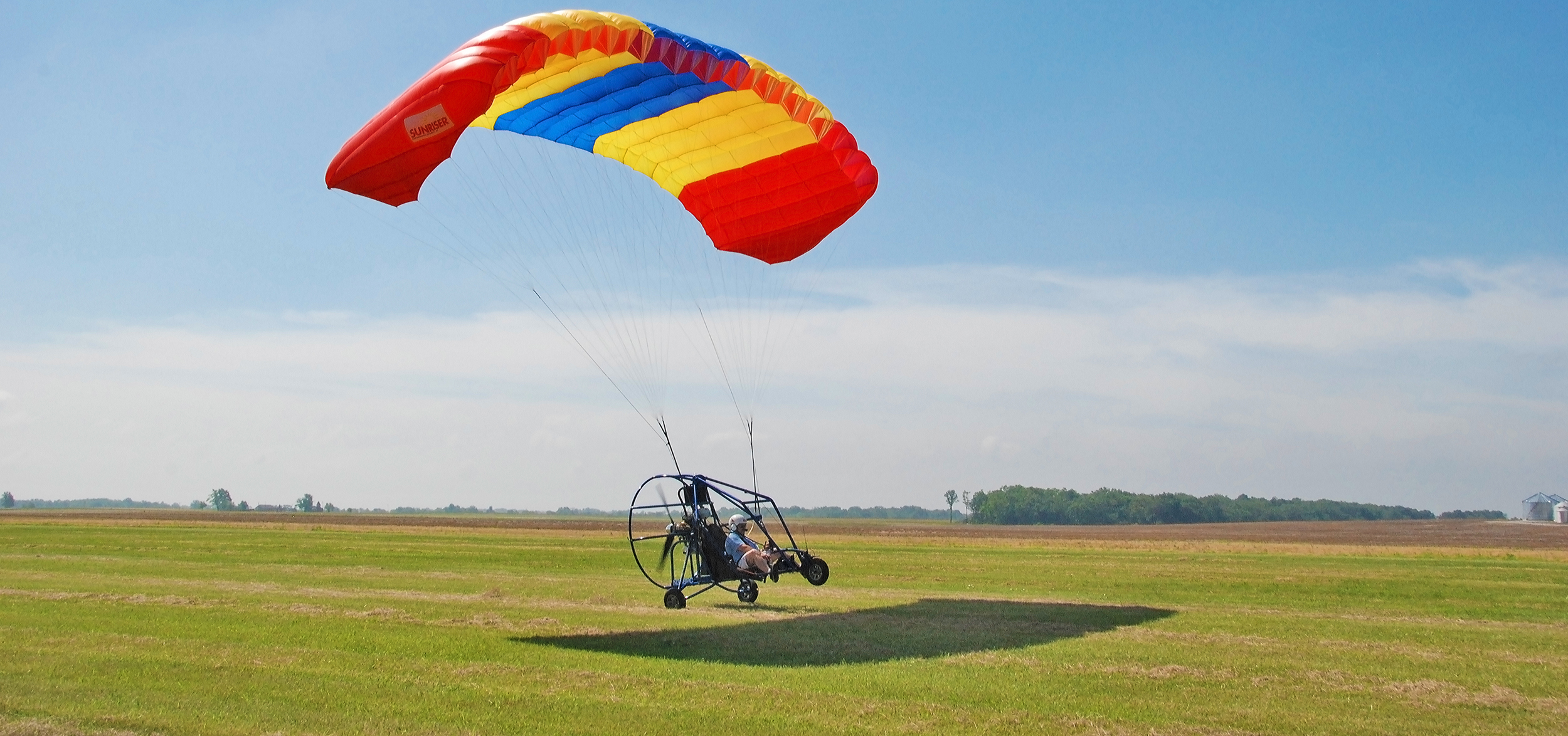Step 1. Start at the beginning.
Before you are able to take the Practical Exam, you have to first get a recommendation to take the exam and you have to take and pass the appropriate FAA Knowledge Test for the rating sought. It does not hurt to prepare for the practical exam before these two other things are done, but realize that the practical exam is the end of the process and not the beginning.
Step 2. Learn what is going to be tested.
The great thing about the FAA testing program is that it is very standardized. So much so, that all of the questions for the Knowledge Tests are published, as well as the answers!
Unfortunately, preparing for the second half of the process, the Practical Exam, is a little more challenging. The Practical Exam is a one-on-one interview with an FAA examiner where you have to demonstrate your powered parachuting knowledge and also show that you can preflight, fly, and land a powered parachute as well as perform certain maneuvers. There is still good news to be found, though. The practical test also has a very structured format. While the exact questions can't be published (since all examiners word things a little differently) the exact topics are published.
The documents containing the topics are called the "Practical Test Standards". There are only two standards that apply to most powered parachutists.
For those wanting to fly at the Sport Pilot level, FAA-S-8081-31, "Sport Pilot Practical Test Standards for Weight Shift Control, Powered Parachute, and Flight Instructor" is the document to refer to. You can download the document from the FAA for free by clicking on the link. This document has the standards for both the pilot and instructor levels in it.
Download the PDF for FAA Practical Test Standards for Sport Pilot Powered ParachuteFor those wanting to fly at the Private Pilot level, FAA-S-8081-32, "Private Pilot Practical Test Standards for Powered Parachute (PPL and PPS) Weight Shift Control (WSCL and WSCS)" is the document to refer to. You can also download the document from the FAA for free by clicking on the link.
Download the PDF for FAA Practical Test Standards for Private Pilot Powered ParachuteThese documents list all of the areas to be discussed, and list many of the references that the questions refer to.
Step 3. Gather your study materials.
The Practical Test Standard (above) is of course the main document to refer to when preparing for the Practical Exam. However, there are some other references that are great both for study and for bringing to the test. A short list is:
- FAR/AIM
- (Federal Aviation Regulations/Airman's Information Manual)The FAR/AIM lists the regulations that will be discussed during the Practical Exam. This is not a book to be memorized, by any means. It is a book to be reviewed and understood. Since the practical exam is an 'open book' test, it is far more important that you know how to extract the appropriate material from it. The 'AIM' half to the book spells out a lot of airport procedures, airspace facts and other things that you should know how to get to. Airman's Information Manual (AIM)
- Pilot’s Handbook of Aeronautical Knowledge
- An FAA document that is well written and informative. It talks about subjects like airspace, aerodynamics, and aero decision making that will be covered during the exam. Pilot's Handbook of Aeronautical Knowledge
- The FAA's Powered Parachute Flying Handbook
- An FAA document that, though incomplete, offers a lot of good information on powered parachuting. And since it is a free download, should certainly be one of the books you read and refer to. Download the PDF for the Powered Parachute Flying Handbook
- Roy's Powered Parachute Book
- To date, this is the most complete book available for the sport of powered parachuting. Includes a lot of information about the sport that is unavailable elsewhere. Learn More About Roy's Powered Parachute Book
Step 5. Practice the flight maneuvers.
The check ride flight is something that requires work with a powered parachute flight instructor. Not only are PPC CFIs authorized to provide the instruction and ultimately recommend you to an examiner, they know best how to perform all of the maneuvers you need for the check ride.
One of the difficult areas is the ground reference maneuvers. These maneuvers (turns around a point, rectangular pattern, and S-turns) kind of need one-on-one coaching. They certainly need to be practiced before the check ride. Those maneuvers are best explained in Roy's Powered Parachute Book.
